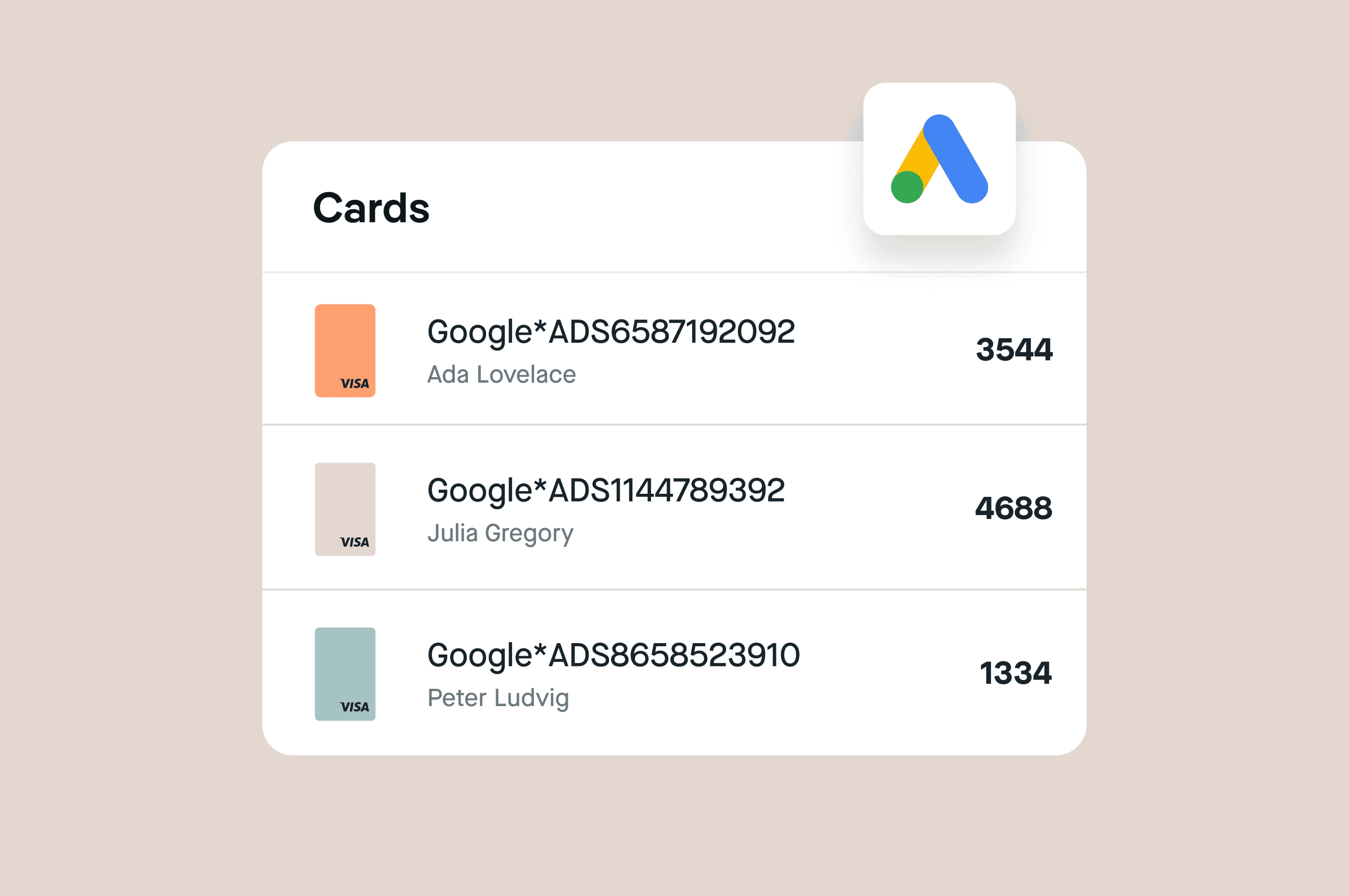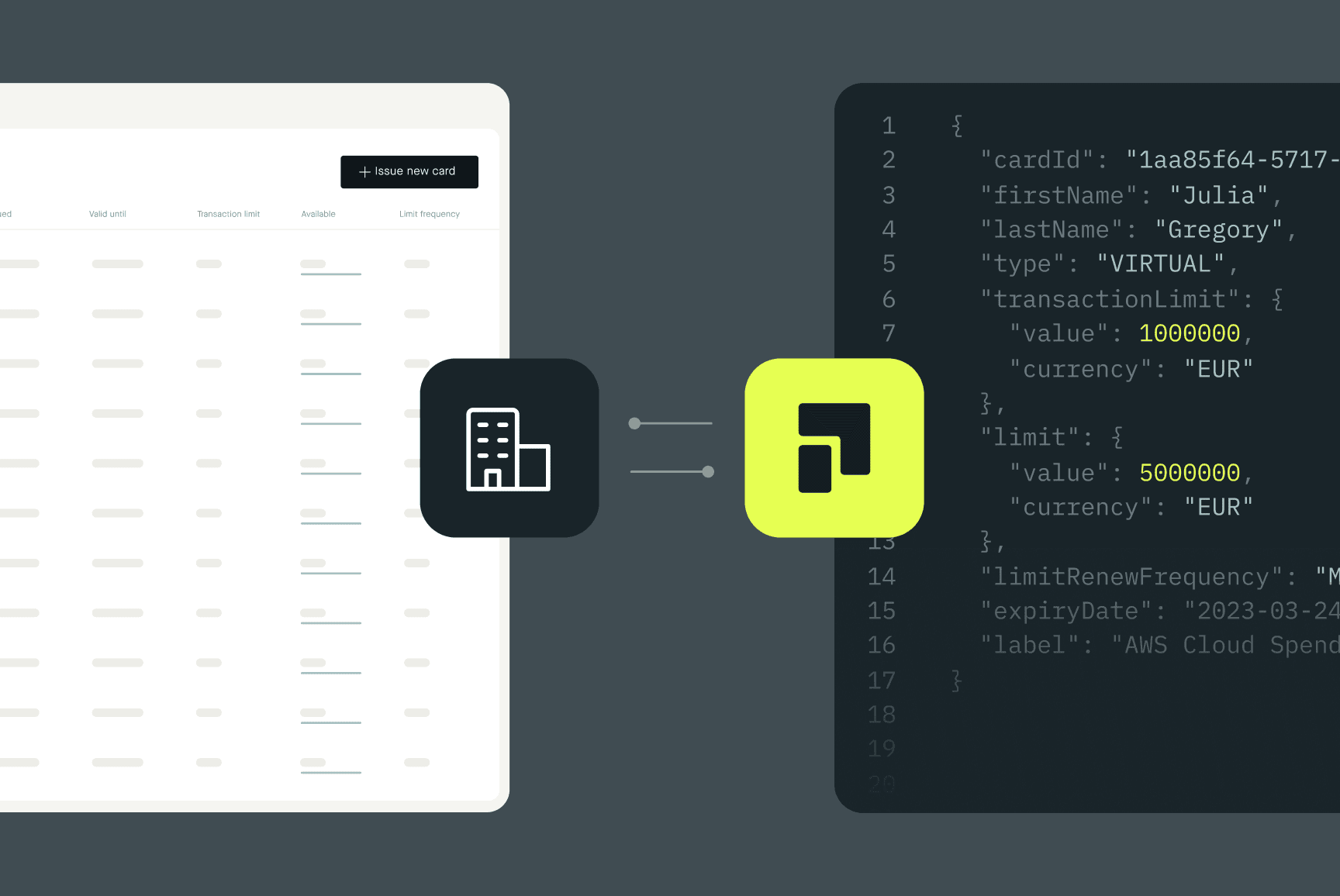How to optimize your Google Ads billing process using Pliant
In the dynamic realm of digital marketing, navigating Google Ads billing efficiently is essential for smooth financial operations. Traditional credit cards often fall short in providing the flexibility and functionality required for the complex transactions in Google Ads spending, but modern credit card solutions like Pliant are tailored to meet these needs.


In this blog post, we'll delve into the challenges marketers and accountants face and explain step by step how Pliant can streamline your Google Ads billing process, ensuring easy card management and hassle-free billing.
Addressing the limitations of traditional credit cards for Google Ads
During demos with future customers we often hear about the common difficulties marketers encounter with traditional credit cards in handling Google Ads billing, like the following:
Lack of cost control: Traditional cards make it challenging to gain a comprehensive overview of transactions across various Google Ad campaigns and multiple marketing channels.
Cumbersome Receipt Management: Marketers struggle with time-consuming receipt management, particularly with Google Ads transactions.
Confusing billing: Matching Google Ads invoices with the actual debited amount on the card poses a significant challenge for both marketers and accountants.
Time-Consuming Receipt Collection: The sheer volume of invoices and statements makes receipt collection a time-intensive task for marketers.
Does this sound familiar to you? Nowadays, marketing departments face the need for a modern payment solution that will streamline their operations with minimal effort and maximum profit.
Pliant solves these problems. This is how it’s done in the Pliant app:
Step 1: Monitor all transactions for full budget control
The Pliant app offers real-time reporting that grants instant access to transaction data in a single dashboard. This enables marketers to monitor spending in real time across multiple marketing channels and glean valuable insights into financial performance through the use of virtual credit cards. The quick issuance of virtual credit cards for campaigns and accounts simplifies the payment process, reducing time and effort spent on tracking expenses.
With Pliant, it’s not only possible to create an unlimited number of virtual cards to match every setup, but card-controls like limits and rules of every card can also be edited at any time on multiple levels.
Manage your campaign budgets and track all expenses with individual project- and team-level card controls.
Keeping track of all transactions is only the basic requirement for a seamless billing process. There’s much more.
Step 2: Automate the process of uploading accounting data
Upload relevant accounting data for your Google Ads transactions such as G/L account, VAT rate, creditors, and cost center data. Click on a transaction and easily edit the accounting-related columns in the Pliant app.
You can also automate the entire process for recurring transactions from merchants like Google. Implement simple rules that automate the preparation of your card transactions for accounting. This way you can avoid repetitive accounting tasks and save significant time each month.
For an efficient Google Ads billing process, Pliant offers the ability to manage all credit cards used for Google Ads under a single cost center. With the Pliant app, you can generate as many cards as you need and customize your payment structure to match your Google Ads account configuration.
Members with a cardholder role can add all the accounting data. Accountants then have the rights to review, approve, and lock all the submitted accounting data. This step is pivotal in preparing your card transactions for seamless accounting export.
The next step often causes difficulties for accountants and marketers, especially with Google Ads – attaching missing invoices to the corresponding transactions.
Learn more: How to optimize payments and invoices for Google Ads billing with Pliant.
Step 3: Manage Google Ads invoices with Pliant
Pliant streamlines the challenging process of collecting receipts for Google Ads costs. In the Pliant app you can see all transactions that are missing receipts. Regular reminders make sure that you don’t forget to attach an invoice before the end of the month.
Pliant transforms receipt management into a digital process, reducing the need for manual action and lowering the risk of errors.
Several functions help to manage the billing process for Google Ads:
Receipt upload: Upload and attach multiple files like statements and invoices provided by Google directly to the associated transactions.
Virtual credit cards: Issue unlimited cards in the Pliant App yourself to have at least one individual primary and backup credit card for each Google Ads account. In addition to the unique card number, you can give each card its own name and color. This helps marketers to keep an overview and assign the invoices to the right transactions.
CSV download: In the Pliant app, you can export a .csv file with every transaction record. There, accountants can filter for all relevant information, including transaction and card IDs for each Google Account ID. The accounting data is being reviewed, approved, and locked for export in a seamless digital process.
This way Pliant helps marketers and accountants establish reliable processes to prepare Google Ads costs for the next tax audit.

Extra tip: Access invoices via the Google payments center
To improve the collaboration between marketers and accountants we recommend using the Google Payments Center. A platform for your payments profile where you can download all invoices from Google Ads without having access to the Google Ads accounts. This is handy if someone in the company needs access to invoices but lacks the familiarity or time to navigate Google Ads directly.
Each payments profile has one primary contact who is the owner of the profile and the contact person for Google. Based on the assigned role such as owner, admin, or user you have access to various permission levels. Learn more about the payments roles in the Google help center.
Step 4: Export records to your accounting system
Connect your credit cards into your existing accounting solutions with Pliant. Lock all your accounting data in the Pliant app and be notified if any information is missing before you submit via CSV export or via API integration.
The accounting export synchronizes both the receipts and the credit card transactions including pre-accounting data. Our seamless integrations ensure a fast and error-free data transfer with one click.
Pay your ad spend with Pliant
Pliant is your ideal partner for automatic payments for Google Ads. The Pliant app is built for seamless preparatory accounting, even for for non-accountants.
Track all your transactions for multiple marketing channels in real time and see where receipts are missing. Marketers and accountants are able to collaborate to collect all the necessary accounting data in time and send it to the accounting system for further processing.
Prevent any financial issues in your next tax audit and ensure consistent and precise financial statements with Pliant. Manage receipt collection and accounting tasks effortlessly with our digital platform.
Learn more: Keep your ad spend under control with Pliant.






